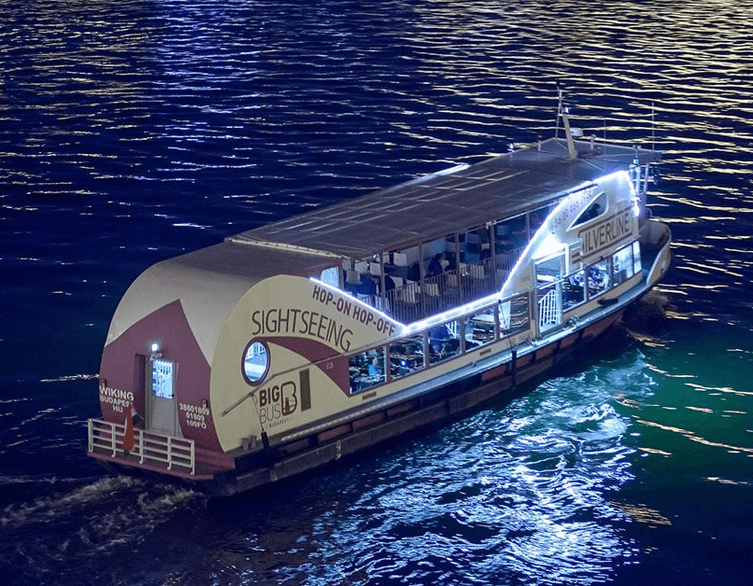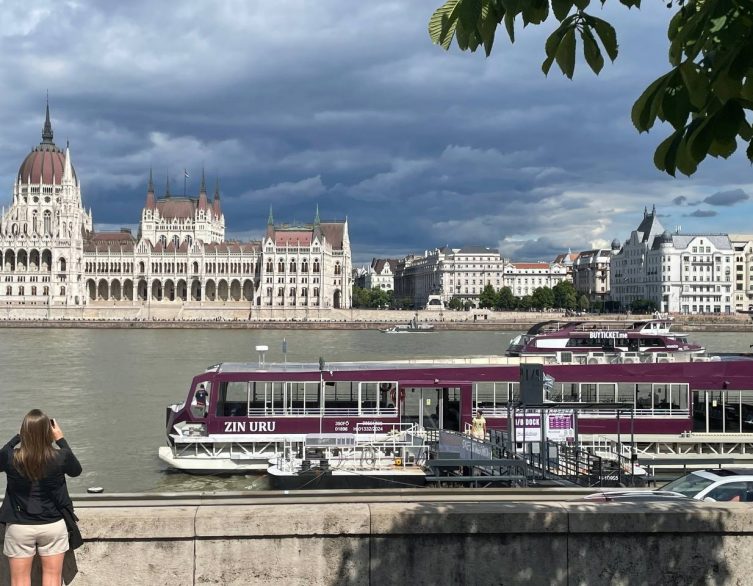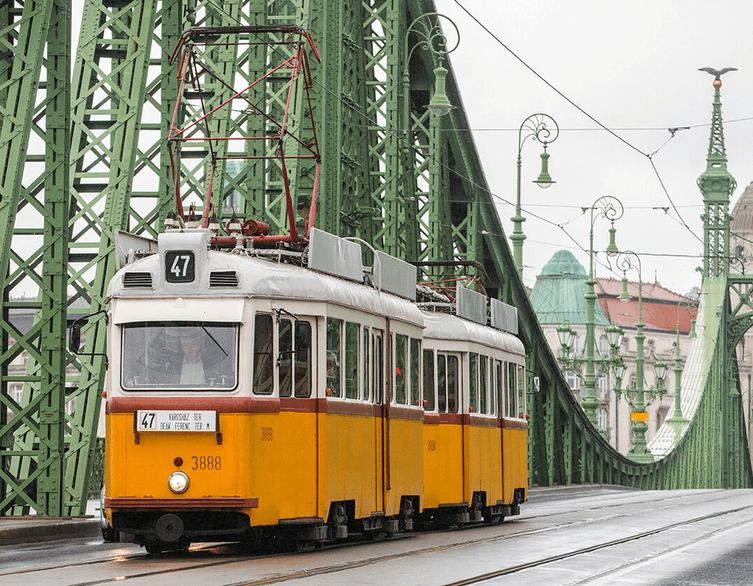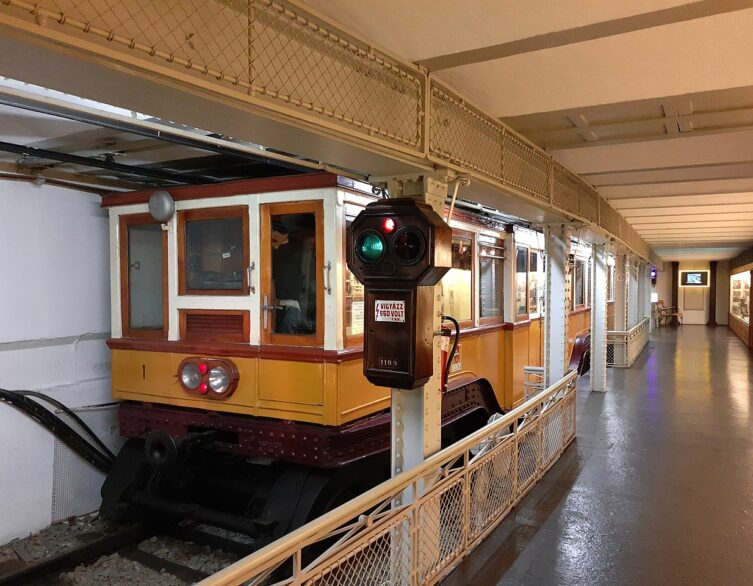Riding Through History: Budapest’s Iconic Tram Line 2 Celebrates 125 Years
When you board the yellow tram gliding along Budapest’s Danube embankment, you’re stepping onto more than just public transportation. You’re experiencing a journey through 125 years of history, elegance, and urban innovation. On October 20, 1900, this very section of track opened to the public, forever changing how Budapest moved and how visitors experienced the city’s stunning riverside panorama. Today, this route ranks among the world’s ten most beautiful tram lines, offering travelers an unforgettable ride through the heart of the Hungarian capital.
A Golden Age on the Embankment
Imagine the scene on that autumn day in 1900. Gentlemen in top hats and ladies in long skirts gathered along the Pest embankment, eager to experience the city’s newest marvel. The atmosphere buzzed with excitement as politicians, engineers, and journalists assembled to witness something extraordinary—not just a new mode of transport, but a celebration of progress itself. The tram line opening that day represented Budapest’s arrival as a truly modern European capital, a city embracing the electric age with style and ambition.
The route connected the Hungarian Academy of Sciences near the Chain Bridge to Eskü Square (today’s March 15 Square), running along what was already one of Budapest’s most elegant and socially significant areas. Unlike other tram lines serving working-class neighborhoods, this rakparti (embankment) line threaded through the city’s fashionable heart, past grand hotels, bustling cafés, and the famous Danube promenade where Budapest’s elite strolled and socialized. From the very beginning, the embankment tram symbolized not just modernity but urban sophistication and the good life.
The technical achievement matched the social significance. Engineers built a 498-meter viaduct with three rows of rivets and iron framework to carry the tracks while preserving the beloved promenade below. Decorative cast-iron railings designed by renowned architect Miklós Ybl enhanced rather than detracted from the riverside aesthetic. This careful attention to beauty alongside functionality demonstrated Budapest’s determination to modernize without sacrificing its distinctive character and charm.
The Journey to Opening Day
The story actually began sixteen years earlier, in 1884, when the German Siemens and Halske company first proposed an electric tram line along the Danube. The idea met immediate resistance from authorities concerned about flood protection and preserving the promenade’s visual appeal. For over a decade, the proposal languished amid bureaucratic objections and competing interests, while Budapest continued relying on slower, more limited horse-drawn trams.
By the 1890s, however, change became inevitable. Feeding horses had grown more expensive than electricity, and the limitations of animal-powered transport became increasingly obvious as Budapest expanded. Two competing companies, the Budapesti Közúti Vaspálya Társaság (BKVT) and the Budapesti Villamos Városi Vasút (BVVV), fought for contracts to electrify and expand the city’s tram network. This rivalry, while sometimes leading to redundant development, ultimately accelerated Budapest’s transformation into a city with one of Europe’s most extensive electric tram systems.
Best deals of Budapest
BVVV secured rights to build the embankment line, and construction finally began in 1896. The project proceeded in phases: the Boráros Square to Erzsébet Bridge section opened in 1897, followed by the Erzsébet Bridge to Academy section that debuted on October 20, 1900—exactly 125 years ago today. Each opening drew crowds eager to experience electric-powered travel along the Danube, watching the city glide past through large windows while enjoying a smooth, relatively quiet ride compared to the clatter of horse-drawn vehicles.
An Icon is Born
The yellow trams quickly became symbols of Budapest itself. By 1900, when the first passengers boarded the embankment route, Budapest operated 55 kilometers of electric tram lines. Just fifteen years later, by 1915, this had expanded to an astounding 156 kilometers, making Budapest’s tram network one of Europe’s most developed. The city had decisively embraced electric public transportation, and the Danube embankment route stood as the jewel in this expanding crown.
What made this particular line special wasn’t just its modernity or technical sophistication—it was the incomparable views. Then as now, passengers riding along the Pest side enjoyed panoramic vistas of Buda’s hills rising across the water, the Castle District’s baroque and gothic skyline, and the river itself sparkling in sunlight or glowing at dusk. The route passed landmark after landmark: the Parliament Building’s neo-Gothic splendor, the Chain Bridge’s engineering grace, the Gresham Palace’s art nouveau elegance, and the Elizabeth Bridge’s span.
Historical photographs from the early 1900s show the embankment still finding its identity. In some images, the promenade bustles with pedestrians, horse-drawn carriages, and early automobiles coexisting with the new electric trams. Others capture the elaborate station structures, the decorative ironwork, and the fashions of the era—women in ankle-length dresses and elaborate hats, men in formal suits despite the heat. These images reveal a city in transition, embracing the future while maintaining connections to its 19th-century elegance.
Evolution Through the Decades
Like Budapest itself, the embankment tram line has evolved continuously over its 125-year history. In 1926, the section along Széchenyi rakpart between the Academy and Parliament moved to Akadémia Street, though it returned to the embankment in 1949. The route was extended northward past Parliament and across the Grand Boulevard, eventually connecting with what became Line 15. Southward extensions eventually reached Közvágóhíd in 1973, creating the route structure that persists today.
World War II brought damage and disruption, but the embankment trams returned to service relatively quickly, testament to their importance for the city’s functioning. The post-war decades saw modernization of rolling stock, track improvements, and integration with Budapest’s expanding metro system. In recent years, construction of the M4 metro line required temporary service adjustments between 2007 and 2009, but the line’s essential character and route remained intact.
Today’s Line 2, running from Jászai Mari Square to Közvágóhíd, represents the direct descendant of that 1900 embankment route. While the trams themselves have been replaced many times over—though Budapest maintains some historic vehicles for special occasions—and the surrounding city has transformed dramatically, the essential experience remains remarkably similar to what those first passengers encountered 125 years ago. You still board a yellow tram, still glide along the Danube past architectural treasures, still experience Budapest from this unique mobile vantage point.
The World’s Most Beautiful Tram Ride
Travel publications and transportation enthusiasts consistently rank Budapest’s Line 2 among the world’s most scenic urban tram routes, and once you’ve experienced it, you understand why. The journey offers a masterclass in urban beauty and architectural history within a single affordable tram ticket. From the Parliament Building’s ornate facade to Buda Castle dominating its hilltop, from the graceful bridges spanning the Danube to the green slopes of Gellért Hill, the scenery unfolds like a moving panorama.
The route gains special magic during particular times. Early morning light gilds the Danube’s surface and illuminates the Parliament’s honey-colored stone. Late afternoon shadows create dramatic contrasts across Buda’s hills. Evening brings electric lights reflecting in the river and the bridges outlined in illumination. Winter adds occasional snow softening the cityscape and creating a fairytale atmosphere, while summer brings vibrant green foliage and outdoor terraces full of people enjoying riverside life.
During the Christmas season, the line becomes even more special through the Fényvillamos (Light Tram) tradition. Select trams are decorated with thousands of twinkling lights, transforming ordinary public transportation into a festive attraction. Riding the illuminated tram along the darkened Danube, past the glowing Parliament and lit bridges, creates an enchanting experience that captures the holiday spirit uniquely. This tradition, now decades old, continues the embankment line’s history of being something more than merely functional—it’s experiential, emotional, and memorable.
Practical Information for Visitors
Experiencing this historic route couldn’t be easier for visitors. Line 2 operates frequently throughout the day, using the same tickets and passes as all Budapest public transportation. A single ticket costs a few hundred forints and allows you to ride the entire route, though you’ll likely want to make multiple stops to explore different areas. Multi-day travel passes offer even better value if you’re staying several days.
Board at any stop along the route, but particularly scenic stretches run between Jászai Mari Square and Fővám Square. The journey takes about thirty minutes end-to-end without stops, though hopping on and off to visit attractions makes for a more rewarding experience. The Parliament area, Chain Bridge vicinity, and the area near the Great Market Hall all make excellent stopping points.
Try riding at different times to appreciate how changing light transforms the views. Morning offers crisp visibility and quieter trams. Midday provides the brightest light for photography. Golden hour before sunset creates stunning atmospheric effects. Evening brings romantic illumination and a completely different mood. Each time of day reveals Budapest differently, and the modest cost of tram tickets makes it easy to ride multiple times during your visit.
Consider timing your visit around October 20 to participate in the anniversary celebrations of this historic route. Budapest often marks transportation milestones with special events, exhibitions, or commemorative trams. Even if no formal events occur, knowing you’re riding on the exact anniversary of the 1900 opening adds another layer of historical connection to the experience.
A Living Monument
The embankment tram line represents something rare in modern cities: infrastructure that functions as both practical necessity and cultural treasure. Every day, thousands of Budapest residents ride Line 2 for their commutes, medical appointments, shopping trips, and social visits. Simultaneously, thousands of tourists ride the same trams purely for the experience and the views. This dual character—simultaneously utilitarian and special—reflects Budapest’s broader identity as a city where everyday life unfolds against a backdrop of extraordinary beauty and deep history.
Standing on the platform waiting for the yellow tram, you’re occupying the same space where those top-hatted gentlemen and long-skirted ladies waited 125 years ago. The trams look different, the surrounding buildings have changed, and the passengers dress in jeans and sneakers rather than formal Victorian attire. Yet the fundamental experience connects across the decades: boarding the tram, finding a seat by the window, feeling the gentle motion as it begins moving, watching the Danube and the city glide past, experiencing Budapest from this unique perspective that has captivated riders for over a century.
The embankment tram has witnessed Budapest’s triumphs and tragedies, its celebrations and struggles, its growth and transformations. It survived two world wars, political upheavals, economic crises, and countless smaller changes. Through it all, the yellow trams kept running along the Danube, connecting the city to itself, offering residents and visitors alike this mobile viewing platform for appreciating Budapest’s extraordinary setting and architectural heritage.
So when you ride Line 2 during your Budapest visit, remember you’re not just using public transportation—you’re participating in a living tradition that stretches back 125 years to that October day in 1900 when the city’s newest pride first rolled along the embankment, uniting technical progress with urban elegance in a way that still delights everyone fortunate enough to experience it.




















